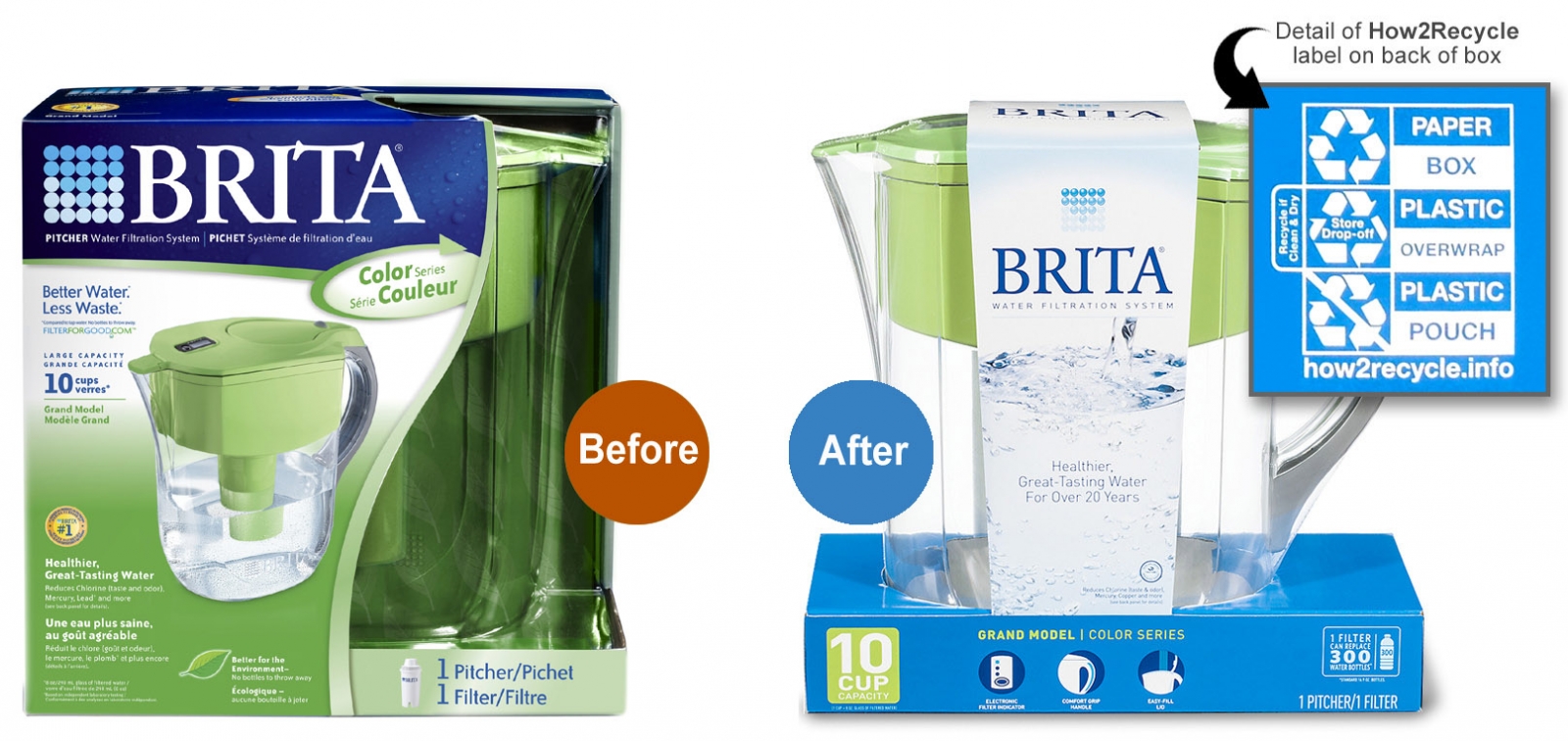Providing clear and accurate package labeling regarding recyclability and other environmental claims helps consumers recycle materials properly and increases transparency. It can also improve a brand’s reputation and increase customers’ confidence in a company’s commitment to sustainable practices. But the process of evaluating and determining environmental claims for specific packaging materials and applications should be more than a last step in the packaging development process; ideally it can help guide material and design choices. Many companies—especially those with stated sustainability goals—take labeling guidelines into account when engineering or redesigning packaging.
For example, when Annie’s Homegrown, based in Berkeley, CA, decided to apply the How2Recycle label on their packaging, they used the label guidelines to inform discussion around packaging types and materials, ultimately aimed at the design of more recyclable packaging. Click here for the full success story.

Similarly, Clorox, headquartered in Oakland, CA, redesigned the packaging for their Brita water filter pitcher in the process of integrating the How2Recycle label. Instead of a paperboard box with a clear, molded PVC plastic insert, the packaging now consists of a carton tray and band containing the pitcher protected by shrink film. The new design allows for a significant material waste reduction compared to the previous packaging and eliminates materials that are difficult to recycle (PVC), while letting shoppers look at the actual pitcher without opening the carton.
Typically, package labeling decisions involve not only the packaging engineers at an organization, but also staff in marketing, procurement, legal, and sustainability. With so many different disciplines affected, it is most feasible and convenient to phase in labeling such as the How2Recycle label one product line at a time, as packaging is considered for refresh or redesign.
Life Cycle Analysis (LCA) can be a helpful tool in evaluating the full set of impacts and benefits of a given packaging material—from raw material sourcing to end-of-life management. Understanding the relative importance of each impact and benefit is essential to guide decisions such as material selection. For example, while glass containers may have the benefit of high recyclability, their weight may rank less favorably in transport efficiency. A wide range of LCA tools exist to help organizations with setting benchmarks and comparing/evaluating packaging choices. A good introduction to the topic is Packaging Design for Sustainability, an online guide created by the Sustainable Packaging Coalition in collaboration with several partners in the packaging industry.